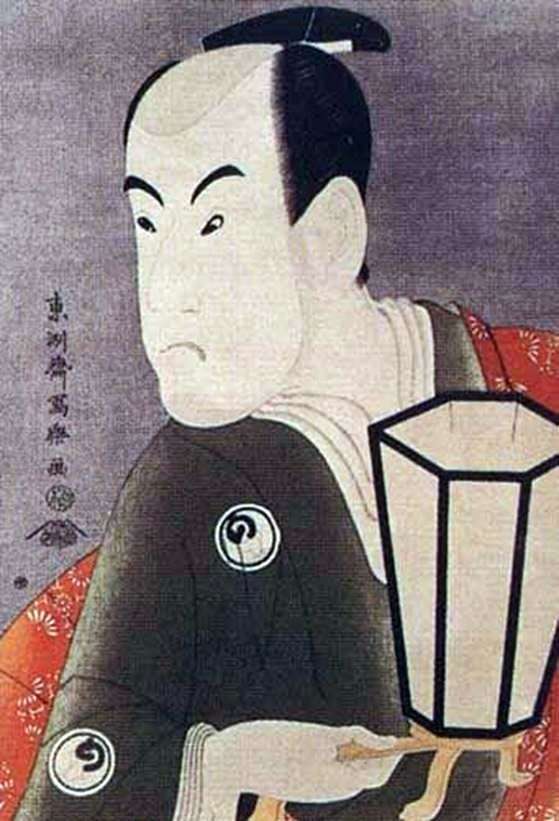
This applies to engraving. Thus, the new concept of the landscape as an image of a specific locality is formed in Ukiyo-e under the direct influence of European works, primarily Dutch etchings, which, although in limited numbers, penetrated the country in the 18th-19th centuries from Dasim.
This Dutch trading post in Nagasaki was the only source of European knowledge spread during the Edo period. A special role in this played rangakusya. After 1720, when the bans on everything European, introduced in the beginning of the XVII century, were relaxed and it became possible to study European sciences and art, a special direction was formed in Japan – rangaku.
His task was to master the accessible complex of European knowledge, including rangaku-e. Rangaku-e leader Siba Kokan and his followers were engaged in both oil painting and engraving on metal.
 El actor Bando Hikosaburo III como guerrero Sagisaka Sanan – Tusyushay Syaraku
El actor Bando Hikosaburo III como guerrero Sagisaka Sanan – Tusyushay Syaraku L’acteur Bando Hikosaburo III en tant que guerrier Sagisaka Sanan – Toshusai Sharaku
L’acteur Bando Hikosaburo III en tant que guerrier Sagisaka Sanan – Toshusai Sharaku Actor Otani Oniji II as servant of Edoheus by Toshusai Syaraku
Actor Otani Oniji II as servant of Edoheus by Toshusai Syaraku Yajima Kihei Mitsunobu by Utagawa Kuniesi
Yajima Kihei Mitsunobu by Utagawa Kuniesi Tamagano in Takano by Suzuki Harinobu
Tamagano in Takano by Suzuki Harinobu Geisha, stirring coals in the brazier by Hosoda Aisi
Geisha, stirring coals in the brazier by Hosoda Aisi Portrait of actor Savamura Sodzyuro III by Katsukawa Sjunse
Portrait of actor Savamura Sodzyuro III by Katsukawa Sjunse Night walk by Hosoda Acee
Night walk by Hosoda Acee